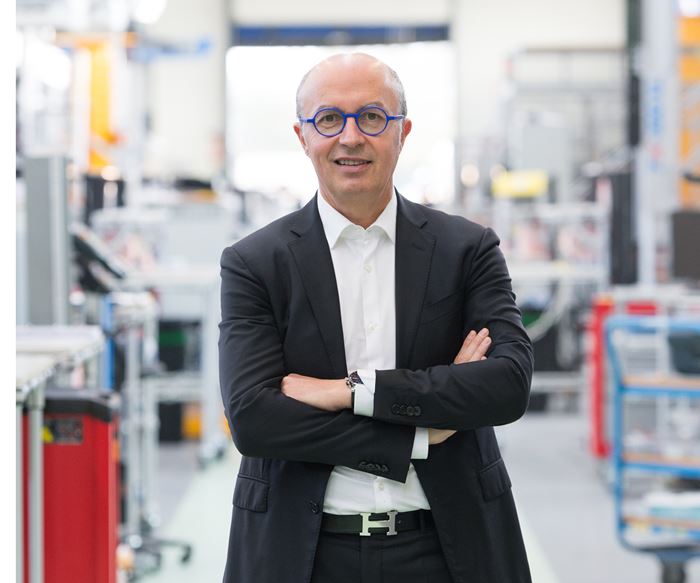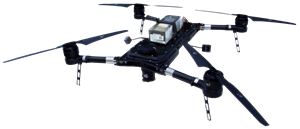Global Player in Robots Puts More of Its Chips on North America
Sepro has global distribution but North America is its biggest growth market. It is manufacturing here for the first time.
Sepro America has two main messages at NPE2018: One is the breadth of its capabilities, both technologically and geographically; and the other is its focused attention on the North American market. “We have worldwide capability,” says Jean-Michel Renaudeau, CEO of Sepro Group, based in France. He points out that the Group has 11 subsidiaries and 40 distributors and representatives in Europe, the Americas, Africa, Asia, and the Pacific. “But the North American market accounts for one-third of our total sales and is the most important area for future growth.”
As a result, Renaudeau says, “We want to be more local, adding assembly capability for large robots at our newly expanded plant near Pittsburgh.” One of the very first “made in America” Sepro robots, and the first ever manufactured outside of France, greets visitors at the entrance to Booth W8571. It’s a five-axis model 7X-45—a three-axis Cartesian robot with a two-axis Stäubli servo wrist—large enough to serve injection presses from around 770 to 1430 tons. Already sold to Wilbert Plastic Services, it’s among the first of 40 big robots Sepro America is planning to build this year. These will include three-axis robots in the Strong line for basic pick-and-place applications and the higher-speed S7 line, as well as the five-axis 7X models.
This move to local manufacturing is part of a plan to make Sepro America a North American regional hub, coordinating strategy for the U.S., Canada, and Mexico, which each have their own separate subsidiaries. And Renaudeau emphasizes that Sepro offers more than just robots to North American molders. “We also offer cell integration, simple or complex. We have a strong, dedicated team in Pittsburgh. Our ‘Solution by Sepro’ program provides injection molders with equipment, engineering expertise and additional services to bring new levels of efficiency and quality to their process.”
Sepro’s other message at the show is about technological breadth and depth. “We have the widest portfolio in the robot market,” states Renaudeau, “stretching from simple sprue pickers to robots for the largest machine you want to automate. We can do everything from pick and place to complex palletizing. We have three-axis and five-axis Cartesian models and six-axis articulated robots from both Stäubli and Yaskawa Motoman.”
Six of these robots are performing acrobatics at Sepro’s booth, and 10 more are working in molding cells around the show, at Sumitomo (SHI) Demag, Haitian, Billion, Toshiba, Maruka Toyo, and others (some private-label arrangements are confidential).
Visitors to those other booths can see varying degrees of integration of the robot with the molding machine, from simple “mirroring” or emulation of the robot screen on the injection-machine controller to launching the robot’s setup recipe along with the injection-machine program for a given mold, directly from the injection-press control. This integration is a key element of Sepro’s “Open 4.0” program, to which a special section of its booth is dedicated. There, visitors can experience how all of Sepro’s robots, from three to six axes, share a single, uniform control interface (HMI): the Visual control platform. They can also explore two new retrofittable “apps” for Visual controls—OptiCycle for automatically optimizing the robot cycle, and Live Support for remote troubleshooting assistance.
“We are focused on achieving even more OEM relationships,” states Renaudeau, “as part of our aim to be a major leader in North America.”
Renaudeau hints that next evolution of Sepro’s control technology, to be called Visual 4.0, will debut later this year at the Fakuma 2018 show in Germany. It is being developed by Sepro together with the Robotics Institute at Carnegie Mellon University. If you want to know more, see what you can learn at Booth W8571.
Related Content
50 Years of Headlines … Almost
I was lucky to get an early look at many of the past half-century’s exciting developments in plastics. Here’s a selection.
Read MoreA Cost Saving Modular Approach to Resin Drying Automation
Whether implementing a moisture-sensing closed-loop system for a single dryer, or automating an entire plant, technology is available to take the guesswork and worry out of resin drying. Using a modular approach allows processors to start simple and build more capabilities over time.
Read MoreDrones and Injection Molding Ready for Takeoff
Drones and unmanned aerial vehicles (UAV) are approaching an inflection point where their production volumes — and functionality — will increasingly point to injection molding.
Read MoreProcessing Megatrends Drive New Product Developments at NPE2024
It’s all about sustainability and the circular economy, and it will be on display in Orlando across all the major processes. But there will be plenty to see in automation, AI and machine learning as well.
Read MoreRead Next
How Polymer Melts in Single-Screw Extruders
Understanding how polymer melts in a single-screw extruder could help you optimize your screw design to eliminate defect-causing solid polymer fragments.
Read MoreTroubleshooting Screw and Barrel Wear in Extrusion
Extruder screws and barrels will wear over time. If you are seeing a reduction in specific rate and higher discharge temperatures, wear is the likely culprit.
Read MoreAdvanced Recycling: Beyond Pyrolysis
Consumer-product brand owners increasingly see advanced chemical recycling as a necessary complement to mechanical recycling if they are to meet ambitious goals for a circular economy in the next decade. Dozens of technology providers are developing new technologies to overcome the limitations of existing pyrolysis methods and to commercialize various alternative approaches to chemical recycling of plastics.
Read More

















.png;maxWidth=300;quality=90)










